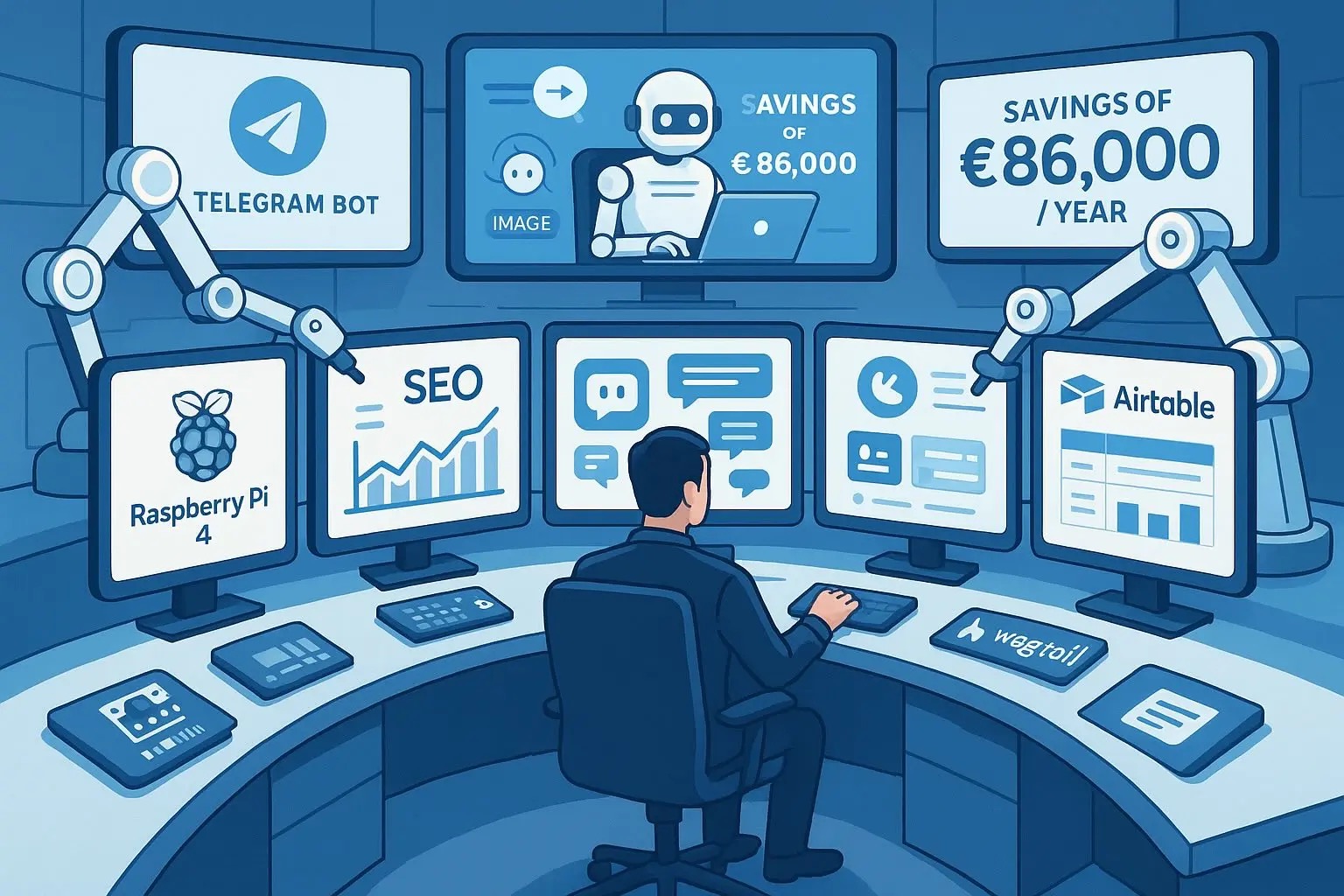
How I Saved a Business €86,000 Annually with AI-Driven SEO Automation
- Alexander Wahl
- Automation , Business , N8n
- July 3, 2025
Table of Contents
Discover how leveraging Artificial Intelligence, automation, and smart SEO optimization in website development helped my friend save a business 86,000€ per year by streamlining content creation and publication—essential insights for entrepreneurs aiming to optimize their digital presence efficiently.
Introduction to Business Optimization through AI and Automation
In today’s competitive digital landscape, business optimization is no longer just about cutting costs but about smartly integrating Artificial Intelligence (AI) and automation to maximize efficiency. As an entrepreneur or website developer, understanding how to harness these technologies can transform your SEO strategy and operational workflows, saving significant time and money.
The True Cost of SEO Content Creation
Writing an SEO-optimized article in the DACH region typically costs 40€ per hour for a freelancer. However, producing a high-quality article involves:
- Researching the topic and technologies (several hours)
- Collecting and processing information (a few hours)
- Writing, formatting, and sourcing images (1–2 hours)
This process takes roughly 4 to 6 hours, translating to €160 to €240 per article. Publishing daily articles would escalate monthly costs to 4,800€–7,200€, or up to 86,400€ annually—a hefty expense for many businesses.
Leveraging AI Agents and Automation for SEO Optimization
Why rely on costly specialists when a single person equipped with the right AI tools can replace an entire marketing or development team? The answer lies in AI-Agent-powered automation.
Automating the Content Workflow
Manual tasks like posting articles, uploading images, and internal linking remain time-consuming even when outsourcing writing. Automation can handle:
- Article generation
- Image creation
- Blog publishing
This is achievable by integrating AI with automation platforms like n8n, which offers a visual interface and minimal development costs.
My Tech Stack for Automated SEO and Website Development
- Raspberry Pi 4 running n8n in Docker for workflow automation and easy updates.
- A Wagtail-based blog website with a custom API for seamless content management.
- A Telegram bot for interactive article topic selection and approvals.
- Airtable for topic storage and AI self-training.
- AI services like Black Forest Labs and ChatGPT for generating SEO-optimized articles and images.
System Demonstration
Step-by-Step AI-Driven SEO Content Automation Process
- User or scheduled trigger initiates article generation.
- Telegram bot proposes 5 SEO-optimized topic options.
- User selects or requests new topics.
- Bot checks for topic uniqueness to avoid duplication.
- AI generates the SEO-optimized article and sends it for user approval.
- User approves or requests edits; bot refines content accordingly.
- AI generates an image based on the approved article.
- User approves or requests new images.
- Bot publishes the article with the image on the website.
- User receives a direct link to the published post.
This entire process takes under 5 minutes on modest hardware, drastically reducing both cost and time.
Overcoming Challenges in AI and Automation Integration
- Ensuring correct JSON formatting for website compatibility required prompt engineering.
- Building exception handlers minimized errors during automation.
- Total development and debugging time: about 1-2 week.
Why Entrepreneurs Should Embrace AI and SEO Automation
- Cost Efficiency: Slash annual content creation costs from over 80,000€ to a fraction.
- Time Savings: Accelerate publication cycles from hours to minutes.
- Scalability: Easily increase content output without proportional increases in human resources.
- Competitive Edge: Stay ahead with cutting-edge SEO optimization and AI-driven workflows.
Additional SEO Best Practices to Complement Automation
- Use header tags (H1, H2) strategically with main keywords early in content.
- Maintain a clean URL structure including relevant keywords.
- Optimize site loading speed and ensure mobile responsiveness.
- Build high-quality backlinks and implement internal linking for enhanced SEO.
- Regularly monitor site health using tools like Google Search Console, SEMrush, or Ahrefs.
Conclusion
By combining Artificial Intelligence, automation, and expert SEO optimization techniques within a streamlined website development framework, entrepreneurs can dramatically reduce costs and improve efficiency. This approach not only saves money but also empowers businesses to scale content production and enhance their digital presence effortlessly.
If you’re interested in affordable, high-quality alarm systems for your home or office, my trusted friend Max offers expert installation with excellent reviews and competitive prices. Check his website: maxalarmanlage.de
This article was personally written and optimized by me, leveraging AI and automation insights but not generated by AI.


